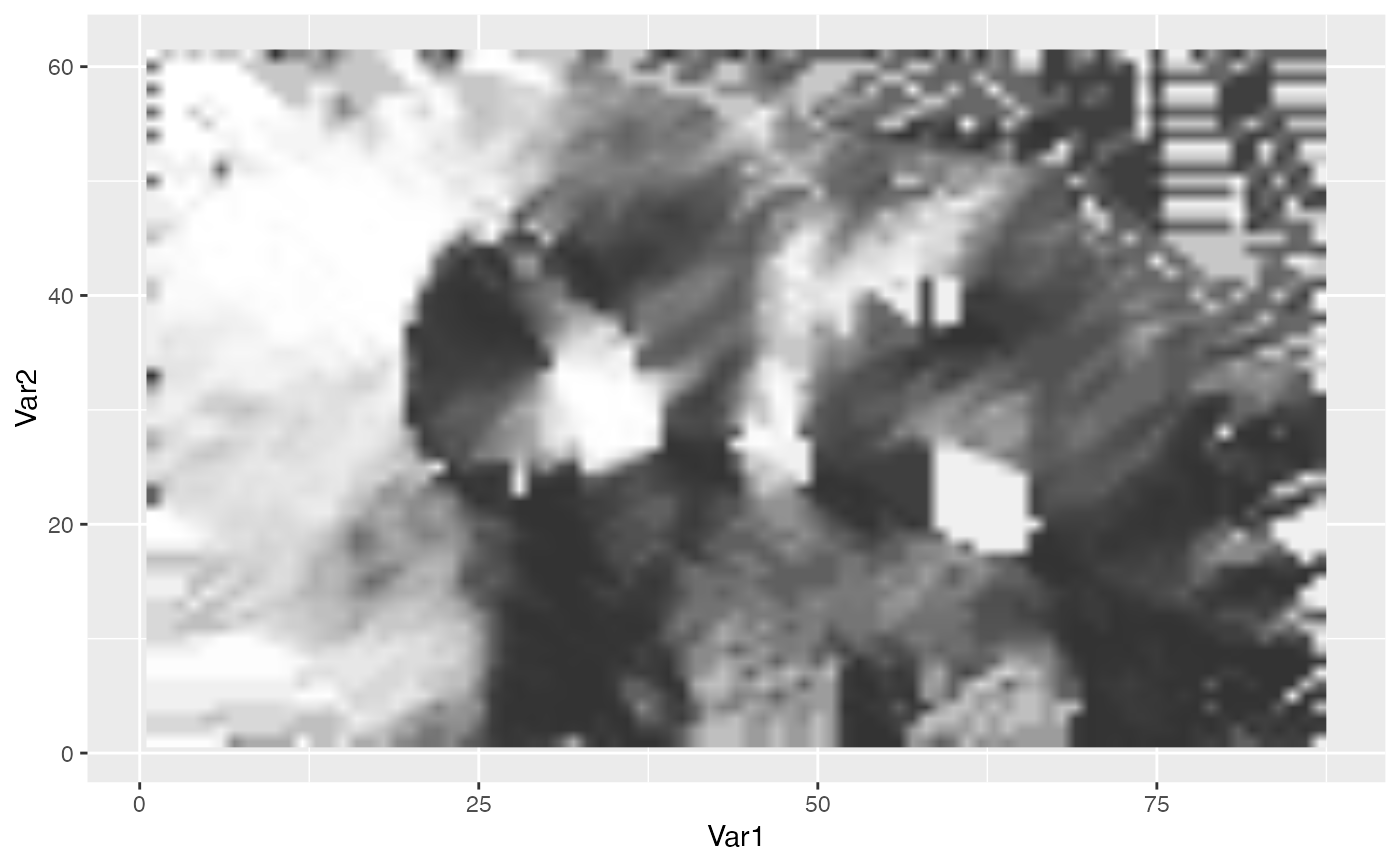geom_relief() simulates shading caused by relief. Can be useful when
plotting topographic data because relief shading might give a more intuitive
impression of the shape of the terrain than contour lines or mapping height
to colour. geom_shadow() projects shadows.
geom_relief(
mapping = NULL,
data = NULL,
stat = "identity",
position = "identity",
...,
sun.angle = 60,
raster = TRUE,
interpolate = TRUE,
shadow = FALSE,
na.rm = FALSE,
show.legend = NA,
inherit.aes = TRUE
)
geom_shadow(
mapping = NULL,
data = NULL,
stat = "identity",
position = "identity",
...,
sun.angle = 60,
range = c(0, 1),
skip = 0,
raster = TRUE,
interpolate = TRUE,
na.rm = FALSE,
show.legend = NA,
inherit.aes = TRUE
)Arguments
- mapping
Set of aesthetic mappings created by
aes(). If specified andinherit.aes = TRUE(the default), it is combined with the default mapping at the top level of the plot. You must supplymappingif there is no plot mapping.- data
The data to be displayed in this layer. There are three options:
If
NULL, the default, the data is inherited from the plot data as specified in the call toggplot().A
data.frame, or other object, will override the plot data. All objects will be fortified to produce a data frame. Seefortify()for which variables will be created.A
functionwill be called with a single argument, the plot data. The return value must be adata.frame, and will be used as the layer data. Afunctioncan be created from aformula(e.g.~ head(.x, 10)).- stat
The statistical transformation to use on the data for this layer, either as a
ggprotoGeomsubclass or as a string naming the stat stripped of thestat_prefix (e.g."count"rather than"stat_count")- position
Position adjustment, either as a string naming the adjustment (e.g.
"jitter"to useposition_jitter), or the result of a call to a position adjustment function. Use the latter if you need to change the settings of the adjustment.- ...
Other arguments passed on to
layer(). These are often aesthetics, used to set an aesthetic to a fixed value, likecolour = "red"orsize = 3. They may also be parameters to the paired geom/stat.- sun.angle
angle from which the sun is shining, in degrees counterclockwise from 12 o' clock
- raster
if
TRUE(the default), uses ggplot2::geom_raster, ifFALSE, uses ggplot2::geom_tile.- interpolate
If
TRUEinterpolate linearly, ifFALSE(the default) don't interpolate.- shadow
if TRUE, adds also a layer of
geom_shadow()- na.rm
If
FALSE, the default, missing values are removed with a warning. IfTRUE, missing values are silently removed.- show.legend
logical. Should this layer be included in the legends?
NA, the default, includes if any aesthetics are mapped.FALSEnever includes, andTRUEalways includes. It can also be a named logical vector to finely select the aesthetics to display.- inherit.aes
If
FALSE, overrides the default aesthetics, rather than combining with them. This is most useful for helper functions that define both data and aesthetics and shouldn't inherit behaviour from the default plot specification, e.g.borders().- range
transparency range for shadows
- skip
data points to skip when casting shadows
Details
light and dark must be valid colours determining the light and dark shading
(defaults to "white" and "gray20", respectively).
Aesthetics
geom_relief() and geom_shadow() understands the following aesthetics (required aesthetics are in bold)
x
y
z
lightdarksun.angle
See also
Other ggplot2 helpers:
DivideTimeseries(),
MakeBreaks(),
WrapCircular(),
geom_arrow(),
geom_contour2(),
geom_contour_fill(),
geom_label_contour(),
geom_streamline(),
guide_colourstrip(),
map_labels,
reverselog_trans(),
scale_divergent,
scale_longitude,
stat_na(),
stat_subset()
